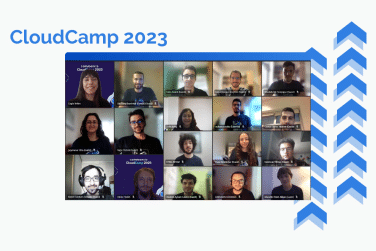Cloud Workload Efficiency:How AWS Well-Architected Reviews Matter
Cloud Workload Efficiency: How AWS Well-Architected Reviews Matter
In today’s rapidly evolving technological landscape, businesses are increasingly migrating their workloads to the cloud to harness its scalability, flexibility, and cost-efficiency. However, this transition comes with its own set of challenges, as organizations need to ensure that their cloud architectures are robust, secure, and optimized for performance. This is where the concept of Well-Architected Reviews comes into play.
In this blog post, we will explore what an AWS Well-Architected Review is, why it is important, and how it can benefit businesses. The AWS Well-Architected Framework (WAF) is a set of best practices and guidelines designed to help organizations create efficient, secure, and reliable cloud architectures. It provides a structured approach to building and evaluating cloud workloads across six core pillars: operational excellence, reliability, security, performance efficiency, cost optimization, and sustainability. By adhering to these pillars, businesses can ensure that their cloud environments are well-designed, high-performing, and aligned with their goals.
Understanding Well-Architected Reviews
A Well-Architected Review is a comprehensive assessment of a cloud workload’s architecture based on a set of best practices defined by cloud service providers, such as Amazon Web Services (AWS), Microsoft Azure, and Google Cloud Platform (GCP).
AWS Well-Architected Framework provides customers and partners with top-tier guidelines for assessing architectures. It offers a series of inquiries that can help gauge whether architecture is aligned with AWS’s best practices.
Built upon six foundational pillars—operational excellence, security, reliability, performance efficiency, cost optimization, and sustainability—the AWS Well-Architected Framework provides a comprehensive structure for crafting robust cloud solutions.
Here are the six pillars:
- Operational Excellence: This pillar focuses on optimizing processes and procedures to ensure smooth operations. It emphasizes automation, monitoring, and incident management to enhance workload reliability and availability.
- Security: Security is paramount in any cloud architecture. This pillar assesses how well the workload protects sensitive data, implements access controls, and adheres to compliance requirements.
- Reliability: Cloud workloads must be resilient in the face of failures. This pillar evaluates how the architecture can handle disruptions, scale as needed, and recover quickly.
- Performance Efficiency: Efficient resource utilization is vital for cost-effectiveness. This pillar examines how well the workload utilizes computing, storage, and network resources to deliver optimal performance.
- Cost Optimization: Cloud services can quickly rack up costs if not managed correctly. This pillar looks into cost management strategies, such as rightsizing resources, leveraging spot instances, and utilizing reserved instances.
- Sustainability: The sustainability pillar of the AWS Well-Architected Framework provides guidance on how to design, build, and operate cloud workloads that are environmentally friendly. By following these principles and best practices, you can reduce the environmental impact of your cloud workloads and help protect the planet for future generations.
For a comprehensive overview of the AWS Well-Architected Framework and its pillars, check out our previous blog post.
How Well-Architected Reviews Improve Cloud Workloads
A Well-Architected Review is a comprehensive assessment of a cloud workload based on the principles of the AWS Well-Architected Framework. These reviews help organizations identify potential risks, inefficiencies, and areas for improvement in their cloud architectures. By conducting a Well-Architected Review, businesses can:
- Identify Risks: Reviews help uncover vulnerabilities and security gaps that might put sensitive data at risk or hinder operations.
- Optimize Performance: Reviews highlight performance bottlenecks and inefficiencies, allowing organizations to fine-tune their architectures for optimal speed and responsiveness.
- Enhance Reliability: Reviews identify potential points of failure and recovery challenges, enabling businesses to build more resilient architectures.
- Reduce Costs: Reviews pinpoint areas of overspending and suggest cost-saving strategies, such as optimizing resource utilization and adopting more cost-effective services.
- Ensure Compliance: Reviews help ensure that security and compliance measures are properly implemented, reducing the risk of legal and regulatory issues.
- Drive Continuous Improvement: By addressing identified issues, organizations can continually refine their architectures and stay aligned with industry best practices.
- Increasing Observability: WAF reviews play a crucial role in enhancing cloud environments by bolstering their logging, metrics tracking, and tracing functionalities. This translates into several benefits, including the ability to identify cost optimization opportunities, track system performance and critical event incidents using comprehensive metrics, efficiently monitor anomalies such as deviations in CPU or memory trends, and detect architectural bottlenecks through end-to-end tracing mechanisms.
How to Conduct Well-Architected Reviews
- Plan: Define the scope of the review and assemble a team with expertise in cloud architecture, security, and operations.
- Assess: Evaluate your workload against the best practices of each pillar. Leverage tools and documentation provided by your cloud provider.
- Identify Gaps: Identify areas where your architecture doesn’t meet best practices and prioritize them based on impact and complexity.
- Recommend Solutions: Propose solutions to address identified gaps. These solutions should be practical and aligned with your organization’s goals.
- Implement Changes: Apply the recommended solutions to your architecture while considering potential impacts on ongoing operations.
- Monitor and Iterate: Continuously monitor your architecture’s performance, security, and cost metrics. Regularly review and update your solutions as your workload evolves.
Key Takeaways
Well-Architected Reviews are a crucial component of a successful cloud strategy. By ensuring that your cloud workloads adhere to best practices across operational excellence, security, reliability, performance efficiency, and cost optimization, you can create a solid foundation for growth, innovation, and success. Embracing Well-Architected Reviews demonstrates your commitment to harnessing the full potential of the cloud while maximizing the value delivered to your organization and customers. Moreover, for each Well-Architected Review that fulfills the criteria, partner program funding is provided.
Commencis is an AWS Advanced Consulting Partner that helps organizations adopt the AWS Well-Architected Framework. Commencis has a deep understanding of the framework and can help organizations implement it in a way that meets their specific needs. Contact our cloud experts to enable cloud workload efficiency in your business.
Reading Time: 4 minutes
Don’t miss out the latestCommencis Thoughts and News.




